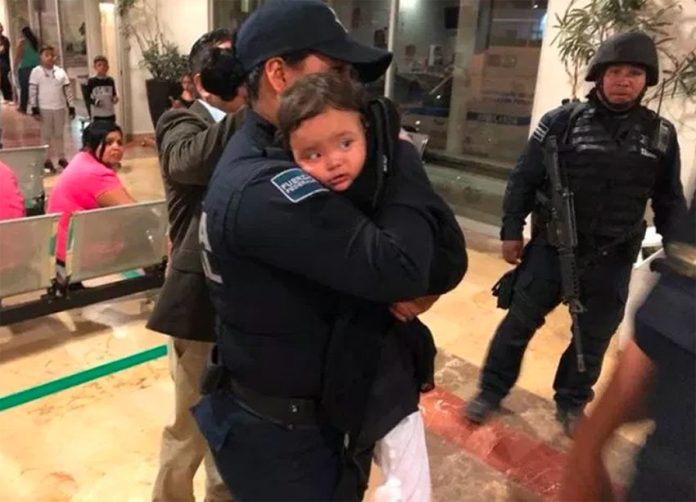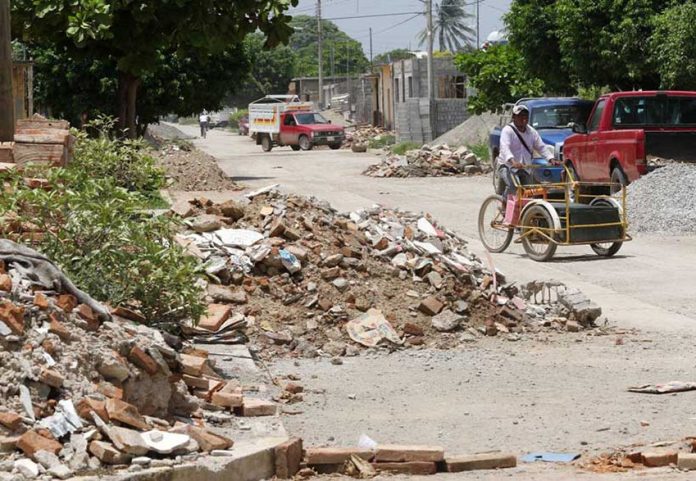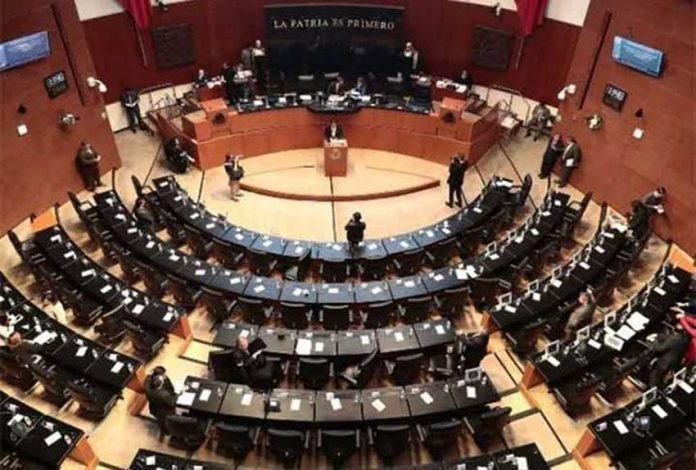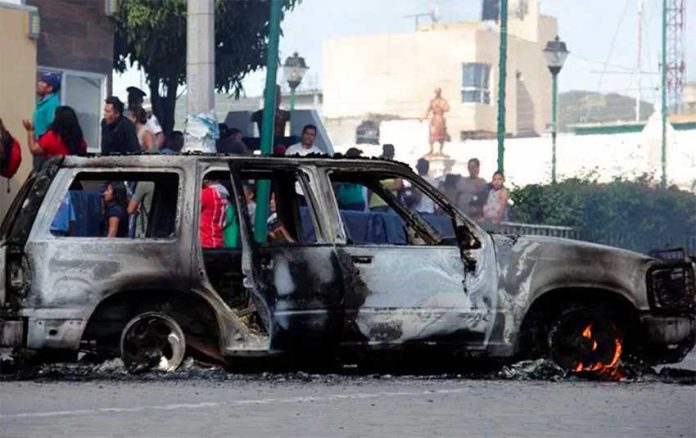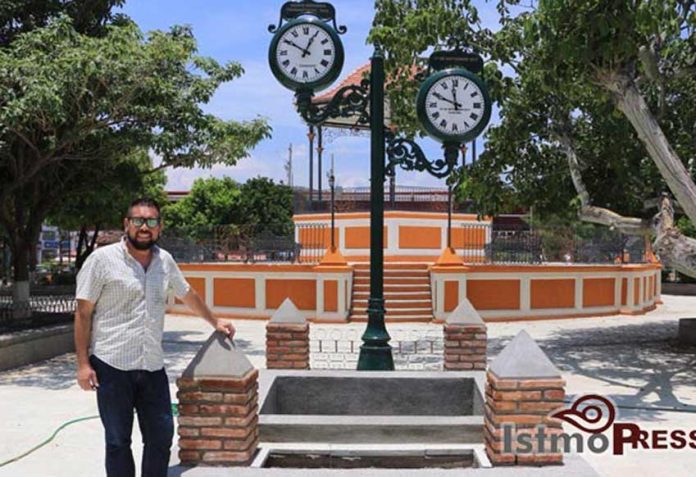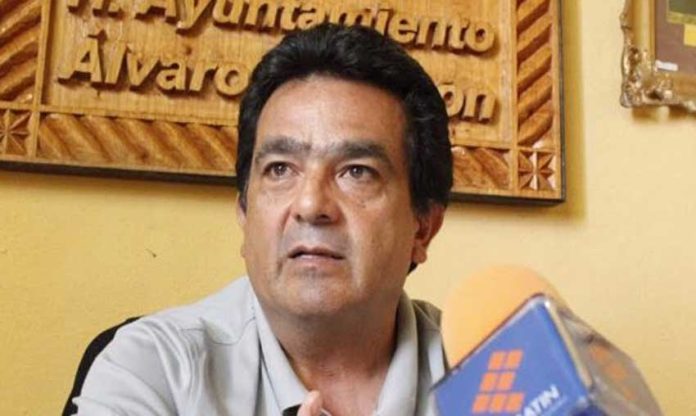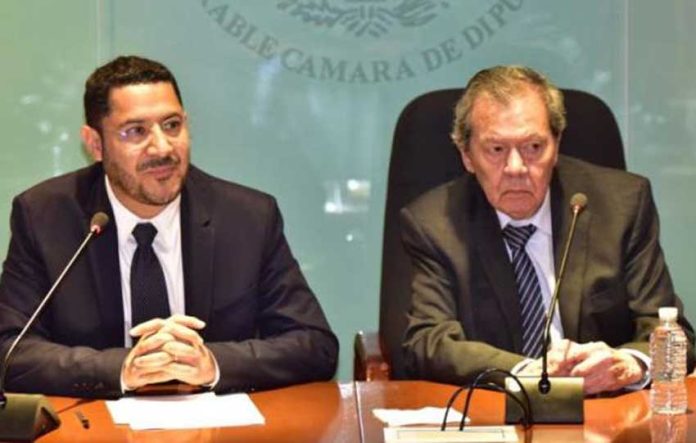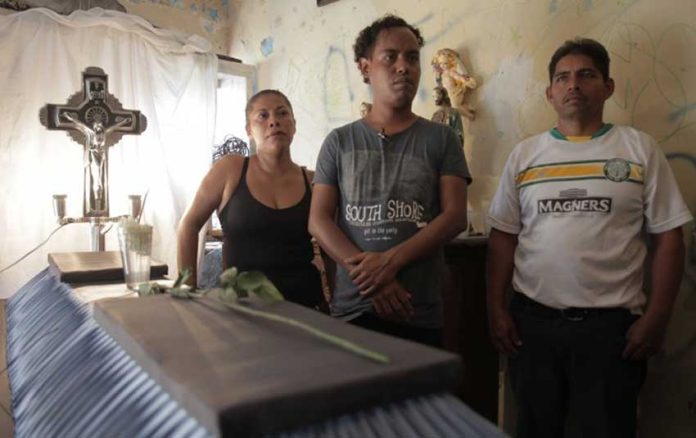Tomorrow will mark the first anniversary of the powerful 8.2-magnitude earthquake that struck off the coast of Chiapas, causing widespread damage and killing about 100 people.
But despite the passing of an entire year, thousands of people whose homes collapsed completely or were severely damaged are still waiting for reconstruction or repair work to be completed or, in some cases, to begin.
Some victims received federal aid money but found that the amount they were allocated was woefully inadequate to meet their reconstruction or repair needs, while others handed over the resources they received to unscrupulous construction companies, who took their money and ran without completing any or all of the work they committed to.
Most victims of last September’s first major earthquake are in the states of Chiapas and Oaxaca, which together bore the brunt of the strong seismic activity at 11 minutes to midnight on September 7.
Romelia Pérez Cruz and Félix González Estrada, a couple both aged in their mid-90s and residents of the Cuauhtémoc ejido (community land) in Chiapas, are among the thousands of victims who continue to suffer from the ramifications of that fateful night.
Pérez and González lost their old adobe home but only received 25,000 pesos (US $1,300) with which to build a new one.
With the limited funds, the best the couple’s son Nevy González Pérez could do was build a six-by-six-meter makeshift shed, which is unsuitable for the region’s hot weather but which they have no choice but to call home.
Hundreds of other families living on the same ejido only received between 15,000 and 30,000 pesos (US $775 – US $1,550) in aid money, which wasn’t enough for them to buy all the construction materials they needed or pay the labor costs to allow them to finish their homes.
That’s the situation of Belisario López Gómez and his family, whose home sustained “total damage” in the quake.
However, instead of receiving the 120,000 pesos (US $6,200 at today’s exchange rate) they should have been entitled to, all they got was 15,000 pesos.
For the past year, López, his wife and two daughters had no choice but to live with his mother-in-law as he seeks out loans from alternative sources to complete the reconstruction work.
While he has been approved for a 50,000-peso bank loan, López told the newspaper El Universal that he still needs another 40,000 pesos to finish the family’s new home, which is currently without a roof and doors among other shortcomings.
In other parts of the state and Oaxaca — especially the Isthmus of Tehuantepec region — many more are in similar situations.
Oaxaca Governor Alejandro Murat said this week that 60% of quake-damaged homes have been repaired or rebuilt over the past 12 months, although federal authorities say the figure is lower.
He blamed municipal governments for the delays, charging that they had been slow to grant approval for a lot of the construction work.
Murat added that the state Attorney General’s office is investigating the cases in which construction companies are alleged to have defrauded earthquake victims who handed over their government financial aid to them.
Two hundred residents of Juchitán, the Isthmus region’s commercial hub, have complained to municipal authorities that they were duped by unscrupulous builders.
Murat also said that all the stored-value financial aid bank cards the state received were distributed to quake victims.
With regard to a report that 500 families didn’t receive the aid money they were entitled to, the governor said that “in many cases” people were unable to be found.
Murat also said that his government is working hard so that “gigantic steps” can be taken on the still outstanding reconstruction work, which includes the repair of damaged hospitals.
Almost 3,000 schools were also damaged in the state but four out of 10 are still awaiting repairs, statistics show.
According to information in President Enrique Peña Nieto’s sixth and final government report, Oaxaca received 7.36 billion pesos (US $376 million) in federal funding and aid following the earthquake — more than any other state affected by the two major September earthquakes — while Chiapas received 5.32 billion pesos (US $275 million), the third highest amount.
But despite the large injection of funds, the southern states which are two of the poorest in Mexico are suffering from the slowest rebuilding process in the country.
The federal government report said that both Oaxaca and Chiapas have completed less than 40% of the reconstruction and repair work required and distributed less than 40% of the federal money they have received.
Source: El Universal (sp), Milenio (sp)
